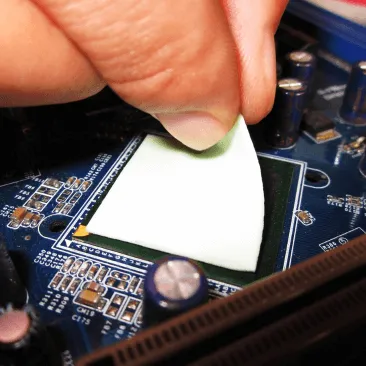
With the rapid development of science and technology, although the convenience and efficiency of thermally conductive silicone sheets are still the first choice for people's thermally conductive filler materials, it cannot be ruled out that they will precipitate silane molecules at continuous high temperatures, especially in hard drives and optical systems that require extremely high equipment environments Special fields such as communication, high-end industrial control and medical electronics, automobile engine control equipment, telecommunications hardware and equipment are absolutely not allowed to have factors that affect the performance of the body, so silicon-free thermal conductive materials will appear in people's eyes.
Silicone-free thermal conductive material is a thermally conductive material with a special resin as the main body. This material is free of silicone volatilization, no silicon oil precipitation, and will not cause circuit failures. It is also known as oil-free and pollution-free thermal pad. Application, it has lower hardness than traditional silicon materials, provides higher deformation and higher thermal conductivity, and has good tensile strength and wear resistance. It can be used in special fields of sensitive silicon.

 English
English
 usheenthermal
usheenthermal



